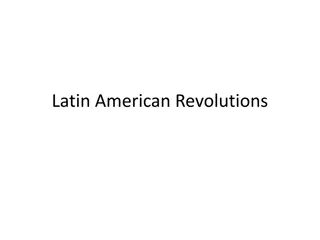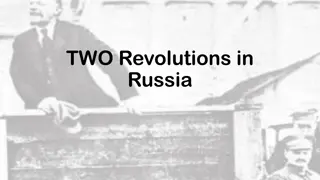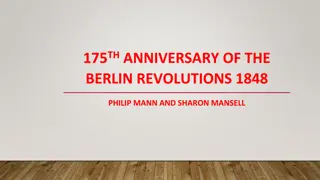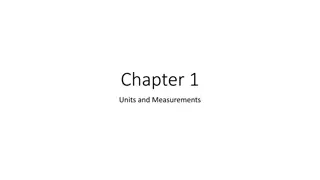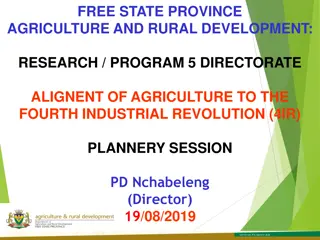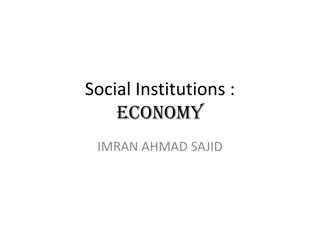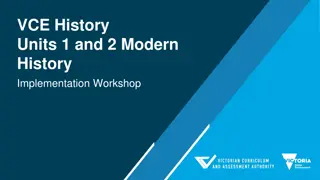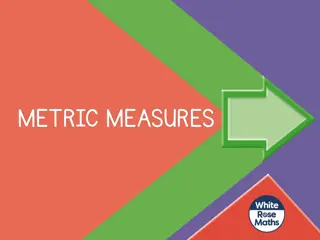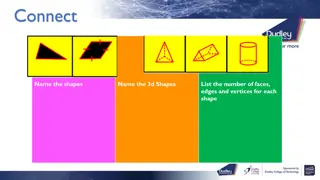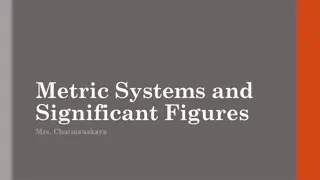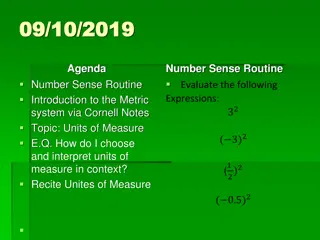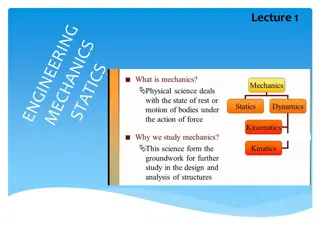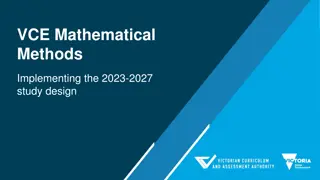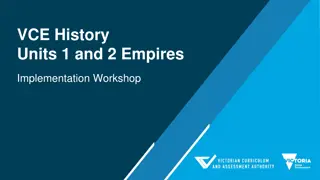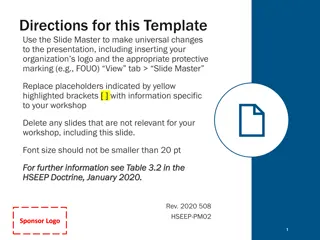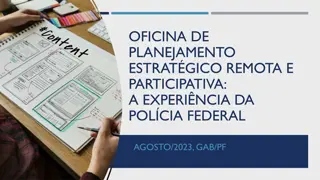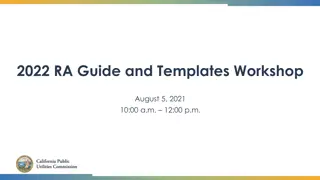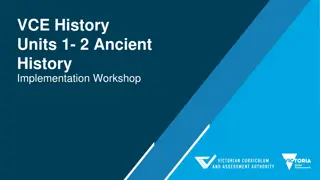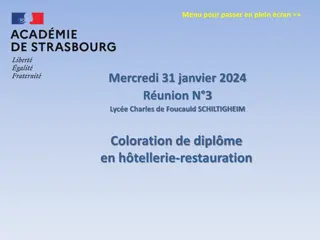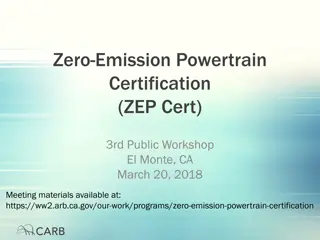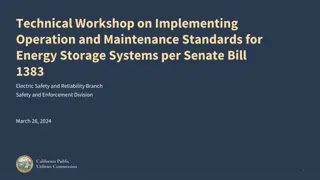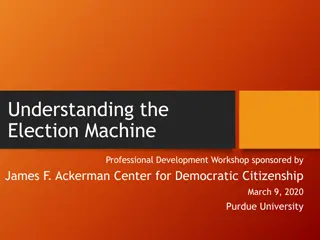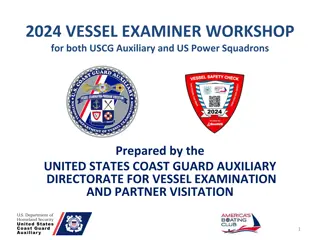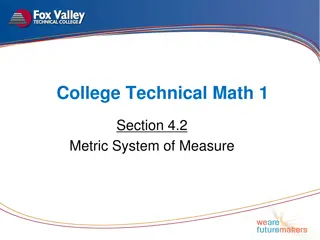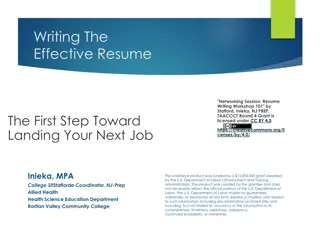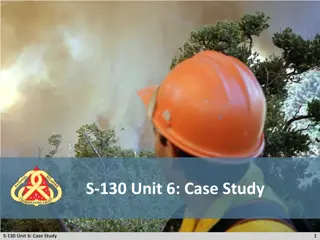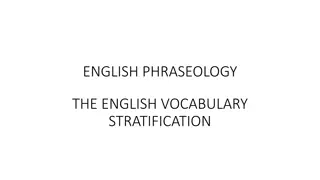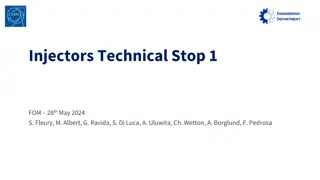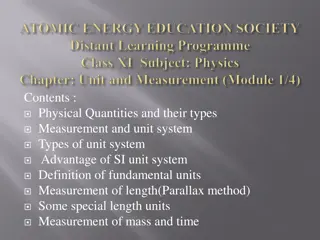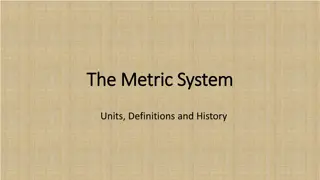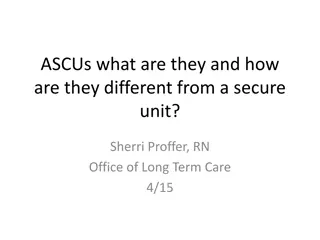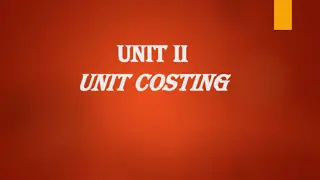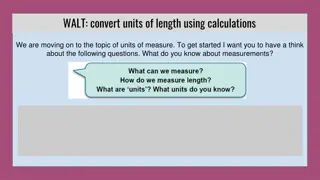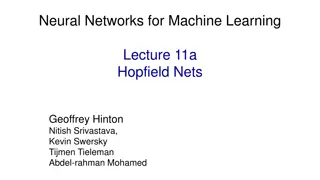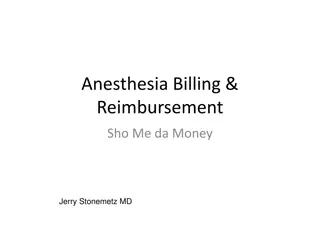Study Design for Units 3 and 4 Revolutions 2022-26 Workshop
Explore the study design and implementation for Units 3 and 4 Revolutions focusing on key areas like causes and consequences of revolutions in countries such as Russia, China, America, and France. The workshop emphasizes acknowledgment of traditional custodians and offers teaching ideas, questions for discussion, and an overview of the course content. Changes in the 2022-26 study design include refining key knowledge and assessment formats. Teachers can choose two revolutions to study, with specific timeframes and outcomes provided for each revolution selected.
Download Presentation

Please find below an Image/Link to download the presentation.
The content on the website is provided AS IS for your information and personal use only. It may not be sold, licensed, or shared on other websites without obtaining consent from the author. Download presentation by click this link. If you encounter any issues during the download, it is possible that the publisher has removed the file from their server.
E N D
Presentation Transcript
Units 3 and 4 Revolutions 2022-26 Study Design Implementation Workshop
Acknowledgment of Country I would like to acknowledge the traditional custodians of the many lands across Victoria on which each of you are living, learning and working from today. For myself and those of us in the Melbourne metropolitan area, we acknowledge the traditional custodians of the Kulin Nations. When acknowledging country, we recognise Aboriginal and Torres Strait Islander peoples spiritual and cultural connection to country and acknowledge their continued care of the lands and waterways over generations, while celebrating the continuation of a living culture that has a unique role in this region. I would like to pay my respects to Elders past, present and emerging, for they hold the memories, traditions, culture and hopes of all Aboriginal and Torres Strait Islander peoples across the nation, and hope they will walk with us on our journey.
Outline At a glance Features of Units 3 and 4 Revolutions Overview of the areas of study Teaching ideas Questions
At a glance Units 3 and 4 Revolutions Russia China America France Area of Study 1 Causes of revolution Area of Study 2 Consequences of revolution Schools choose two of the four options (e.g. Unit 3 France & Unit 4 Russia).
Changes in 2022-26 Study Design Refinement of key knowledge stems Consolidation and reduction of key knowledge Changes to assessment formats
Units 3 and 4 Revolutions In developing a course, teachers select two revolutions to be studied, one for Unit 3 and one for Unit 4 from this list: The American Revolution The French Revolution The Russian Revolution The Chinese Revolution. The revolution selected in Unit 3, Area of Study 1, must be selected for Unit 3, Area of Study 2. The revolution selected in Unit 4, Area of Study 1, must be selected for Unit 4, Area of Study 2.
Timeframes Outcome 1 Causes The American Revolution (1754 4 July 1776) The French Revolution (1774 4 August 1789) The Russian Revolution (1896 26 October 1917) The Chinese Revolution (1912 1 October 1949). Outcome 2 Consequences The American Revolution (4 July 1776 1789) The French Revolution (5 August 1789 1795) The Russian Revolution (26 October 1917 1927) The Chinese Revolution (October 1949 1976). It is the Key Knowledge within the timeframes that must be taught.
Big Planning Ideas Copy key knowledge dotpoints into a document. (Don t forget stem statements they define what kids need to do with knowledge) Rearrange in chronological order Chunk related key knowledge to form lessons. Look for opportunities to form links between, and reinforce understand of, key knowledge dotpoints: For example, King George III (role of individuals ) should be linked to British management of colonies (events and conditions ) This allows multiple key knowledge points to be taught in a single lesson, and allows them to be revised and consolidated again in later lessons. Provide students with note-taking prompts and weekly checklists. These should link key knowledge dotpoints to places where students can find information (e.g. page references in a textbook, URL of a website, resources on school LMS) If you are new to Revolutions, consult neighbouring schools, Revolutions Teachers Network and HTAV for examples of weekly planners
Units 3 and 4 Revolutions Area of Study One Causes of revolution Outcome 1 Analyse the causes of revolution, and evaluate the contribution of significant events, ideas, individuals and popular movements. Inquiry Questions What were the significant causes of revolution? How did the actions of popular movements and particular individuals contribute to triggering a revolution? To what extent did social tensions and ideological conflicts contribute to the outbreak of revolution?
Units 3 and 4 Revolutions Area of Study One Causes of revolution Key knowledge the events and conditions that contributed to the outbreak of revolution, the ideas that played a significant role in challenging the existing order, the role of individuals in challenging or maintaining the power of the existing order, the contribution of popular movements in mobilising society and challenging the existing order,
Units 3 and 4 Revolutions Causes of revolution Area of Study One Relationship between Key knowledge and Skills ask and use a range of historical questions to explore the causes of the revolution evaluate sources for use as evidence analyse the perspectives of people during the development of the revolution and how perspectives changed and/or remained the same over time evaluate historical interpretations about the causes of the revolution analyse the causes of the revolution evaluate the extent of continuity and change in ideas, individuals and popular movements in the development of the revolution evaluate the historical significance of events, ideas, individuals and popular movements that contributed to the outbreak of the revolution construct arguments about the causes of the revolution using sources as evidence.
Teaching and Learning Ideas Cause Effect Significance Why did this event occur? Consider long- and short-term causes. Consider ideas, leaders and groups. What happened as a result? Describe and document reactions, impacts and responses. Why does it matter? Link all developments forward to the revolutionary situation
Teaching and Learning Ideas Cause Effect Significance Poor conditions for Russian workers (e.g. 13 hour day, unions illegal) Father Georgy Gapon secures 150,000 signatures on petition appealing to benevolent tsar for truth, justice and protection want 8 hour day and democratic reforms 150,000 protestors marched to Winter Palace Tsar dismissed reports of protests and left capital with no instructions 200 protestors killed and 800 wounded in Bloody Sunday massacre Destroyed myth of the benevolent Tsar; now seen as Bloody Nicholas Inspired widespread protests against autocracy: strikes, rebellions, reform petitions Initiated pressure for democratic reform that led to October Manifesto
Teaching and Learning Ideas How important were each of the following in contributing to the Communist victory in 1949? The Comintern Shanghai Massacre Mao Zedong Long March Yan an Soviet Red Army War with Japan Zhu De Marxism-Leninism Most important Least important
Units 3 and 4 Revolutions Area of Study Two Consequences of revolution Outcome 2 Analyse the consequences of revolution and evaluate the extent of continuity and change in the post-revolutionary society. Inquiry Questions What were the consequences of revolution? How did the new regime consolidate its power? What were the experiences of those who lived through the revolution? To what extent was society changed and revolutionary ideas achieved or compromised?
Units 3 and 4 Revolutions Area of Study Two Consequences of revolution Key knowledge the challenges the new regime faced in attempting to consolidate its power, the changes and continuities in political, social, cultural and economic conditions that influenced leaders to compromise and/or achieve their revolutionary ideals, the role of significant individuals that influenced and changed society, the diverse revolutionary experiences of social groups and their responses to the challenges and changes to the conditions of everyday life the extent of continuity and change in
Units 3 and 4 Outcome 2 the extent of continuity and change in American society 1754 1789. the extent of continuity and change in French society 1774 1795. the extent of continuity and change in Russian society 1896 1927. the extent of continuity and change in Chinese society 1912 1976.
Units 3 and 4 Outcome 2 the extent of continuity and change in Think holistically about the extent of change brought by the revolution Examine continuity across the whole revolution Allows students to use knowledge across the entire study to illustrate continuity and change Essentially, students can use knowledge from Outcome 1 in any discussion of change and continuity in Outcome 2
Units 3 and 4 Revolutions Consequences of revolution Area of Study Two Relationship between Key knowledge and Skills ask and use a range of historical questions to explore the consequences of the revolution evaluate sources for use as evidence analyse the perspectives of people on the post-revolutionary society and how perspectives changed and/or remained the same over time evaluate historical interpretations about the consequences of the revolution analyse the consequences of the revolution evaluate the extent of continuity and change in the post-revolutionary society evaluate the historical significance of the consequences of the revolution construct arguments about the consequences of the revolution using sources as evidence.
Teaching and Learning Ideas Challenge Response Outcome What problems did the revolutionary government face? What objectives did it seek to achieve? Discuss its goals. How did the revolutionary government try to resolve the crisis? Provide detail about laws and policies they implemented. How effective were the revolutionary government s responses? Describe the impacts (intended, unintended, positive, negative), judge effectiveness, and identify change and/or continuity.
Teaching and Learning Ideas Before revolution During revolution After revolution Republican government by the Directory which aims to suppress popular democratic movements Absolute monarchy with king s rule justified by divine right Liberal experiments first with constitutional monarchy Government Civil rights Peasants Elite groups The church
Assessment Each of the following four assessment tasks must be completed over Units 3 and 4: a historical inquiry an essay evaluation of historical sources extended responses Schools may choose to combine task formats in a single outcome (e.g. students complete essay + evaluation of historical sources on the causes of American Rev) Schools may choose to complete two smaller assessments per outcome (e.g. Week 5 extended response on the Assembly of the Notables, then Week 7 extended response on the crises that emerged at the Estates- General)
Evaluation of historical sources Can comprise primary and/or secondary sources Can comprise written and/or visual sources A range of structured questions per Bloom s taxonomy 25% low order (e.g. identify, describe) short answer provides entry point for weak students, and prompts students to unpack sources 50% mid order (e.g. explain) require students to synthesise evidence from sources with own knowledge 25% high order (e.g. evaluate, to what extent) an opportunity for an extended response that helps discriminate
Evaluation of historical sources: an example Source 1: a secondary source (Orlando Figes on Bolshevik support in 1917) Source 2: a secondary source (Richard Pipes on Bolshevik coup d etat) Source 3: a primary source (e.g. Letter from Lenin to Bolshevik Central Committee calling for overthrow of Prov Govt in September 1917) Q1 Identify three reasons given in Source 1 for the growth of Bolshevik support. (3 marks comprehension) Q2 Outline what Source 2 suggests about the methods used by the Bolshevik party to seize power. (4 marks inference) Q3 Explain why Source 3 was created. (5 marks contextualisation) Q4 Compare and contrast the historical interpretations in Sources 1 and 2. Which do you find more persuasive, and why? (8 marks evaluation) Q5 Analyse the reasons for the overthrow of the Provisional Government. Refer to all three sources and to other interpretations in your response. (10 marks analysis + synthesis)
What is an extended response? Not an essay No formal structural requirements like introduction and conclusion No fixed expectation of length What it is - A concise structured historical argument - Response length may range between 100-200 words - may use a range of command terms for example explain, analyse. evaluate or what extent style questions - Students should use evidence (perspectives and interpretations) in their response - Opportunity to choose between questions that assess breadth of knowledge (explore several relevant points) or depth (explore one point in detail) - Opportunity for students to demonstrate proficiency in a single skill (e.g. evaluation of continuity and change requires sufficient space to gather evidence of before/after and then discuss it) - Opportunity to explore wider range of knowledge than an essay SAC (e.g. 3 extended responses on 3 different key knowledge points)
Extended responses: examples Explain how objections to taxation without representation contributed to the development of the American Revolution up to 4 July 1776. (requires students to select developments to construct a linear argument from event A to event B to event C) Explain the difference between the intended and actual outcomes of the Great Leap Forward. (requires close analysis of specific challenge in consolidating power) Using three or four main points, analyse how different revolutionary ideas challenged the government of Russia between 1896 and 1917. (requires students to select from several possible items listed after a key knowledge sentence stem) Evaluate the extent of change and continuity in French society from 1774 to 1795. Comment on at least two of: how France was governed, how revolutionary ideas influenced society, and/or the rights of a particular social group. (provides very general direction on how students should demonstrate their understanding of an entire key knowledge dotpoint)
Historical inquiry Refer to the Advice for Teachers document, which provides step-by- step advice on designing and implementing this outcome To ensure efficient assessment, aim for a limited timeframe e.g. no more than 2-3 lessons on researching and gathering data. To ensure authentication of student work, consider collecting students work at the end of each lesson, return at start of next A simple approach: 1 Lesson on designing/unpacking a research question and developing focus questions Allocate 1-3 lessons to supervised research and note-taking Allocate final lesson to writing up an extended response(s), sources task or essay under exam conditions, using only the notes from previous lessons


